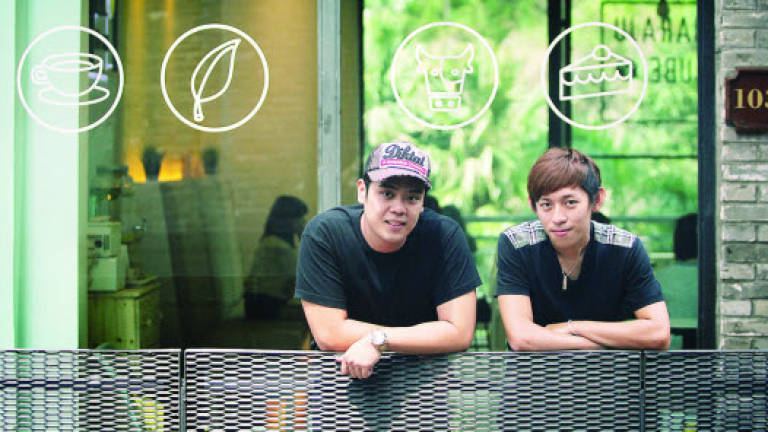Room for squares

HOSPITALITY and tourism graduate Daichi Fukuzato has always wanted to manage his own business. The burgeoning cafe culture here and now may turn anyone off the idea of starting another java joint but the Malaysian-Japanese bloke saw a gap in a market that thrives on coffee and cakes.
"When I was 17, I worked part-time in Harajuku (Tokyo) in a cafe that serves honey toasts. After completing my degree, I was brainstorming cafe concepts and realised that Japanese honey toasts aren't available in Malaysia so instinctively, I made it the star of our business," shared Daichi, 26, of Haraju-Cube Cafe.
Honey toast is a hollow mini loaf that is drenched in honey and flamboyantly garnished with various toppings and sauces. Cubed toasts, smothered in French butter in Haraju-Cube's case, are housed within the loaf.
The novelty cafe, which opened its doors at Empire Damansara two months ago, imports most of the ingredients it uses. Daichi's business partner Kent Ong helps to make from scratch other ingredients such as the green tea ice cream and butterscotch for the Haraju-milk. The 25-year-old has previously baked for Renaissance Hotel Kuala Lumpur and a cake shop in Plaza Damas.
How did you come up with Haraju-milk?
In Japan, you can find different kinds of flavoured milk. The Japanese have been drinking these for decades but it isn't so common here so I thought of introducing the concept to Malaysians. Besides, milk goes well with toasts.
Haraju-Cube has been getting mixed reviews; one of which was the "steep" prices of your toasts. What do you have to say to that?
Firstly, discerned customers would be able to tell that our ingredients are of premium quality. We're using imported butter – not margarine, chocolates from Belgium, strawberries from Korea, Uji matcha (high grade green tea powder) from Kyoto, and chocolate and berry sauces from France. Our honey toasts are also huge. Just like pizza, the portion and price are meant to be shared by two to four people.
Who came up with the branding concept and designs for the interior and serving ware?
My cousin Aaron, who's a fresh graduate in graphic design, helped us. He knows design trends well and he delivered as we have requested of him: something minimalistic yet feels Japanese. We also noticed that cafes these days tend to be very dim and dark so we wanted ours to be different.
We personally sourced for the lighting, furniture and serving ware in Thailand.
Unfortunately for a flourishing scene, not many food and beverage businesses survive long. How do you plan to keep people coming back?
Coming up with new flavours every month is already in discussion. We may also come up with smaller portions of the honey toast to cater to couples. However we don't want to stop at operating a cafe. In the future we plan to develop this into a restaurant and serve main dishes such as spaghetti and Japanese curry rice. At the end of the day we have both worked in the kitchen so we are capable of whipping up more than desserts.
What's the best business advice you have received?
Three months before we opened Haraju-Cube, we were driving around town to do research. We ended up sampling the breads at Tommy Le Baker at Jalan Ipoh. We were conveying to the owner our plan to open a cafe and that we were quite anxious.
He told us, "Don't worry about what other people say about your food. As long as you think your food is good, just do it." Indeed we like the food we make so his words really encouraged us.